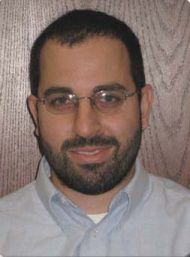Main Content
Lesson 02: Nonfiction as Literature: Part One
- First Page|<<
- Previous Page<
- 3
- 4
- 5
- Next Page>
- Last Page>>|

LLED464:
Lesson 02: Nonfiction as Literature: Part One
Reading Highlights
This Lesson's Reading Highlights include the following authors:
- Georgia Heard
- Barbara Kiefer and Melissa Wilson
- Penny Colman
- Eric Tribunella and Carrie Hintz
Note: Once you have completed the current slide, please click on the subsequent sphere at the top of the carousel to proceed to the next author.
Georgia Heard

Writer, poet, and educator Georgia Heard is very attuned to the power of words and authentic expression through writing. Her books include Awakening the Heart: Exploring Poetry in the Elementary and Middle School, Poetry Lessons to Meet the Common Core State Standards, and For the Good of the Earth and the Sun: Teaching Poetry. In this lesson, we are reading “Types of Nonfiction” from her book, Finding the Heart of Nonfiction: Teaching 7 Essential Craft Tools with Mentor Texts, to explore the complexities of nonfiction as a genre, and what makes nonfiction writing engaging, memorable, and enjoyable to read as literature. Heard identifies and discusses four main categories of nonfiction: expository writing; narrative nonfiction; persuasive, opinion, and argumentative writing; and descriptive nonfiction. In this section and others, she makes connections to the Common Core State Standards.
Barbara Kiefer and Melissa Wilson
In Children’s Literature studies, Barbara Kiefer is well known for her work revising editions of Children’s Literature in the Elementary School by Charlotte Huck, Susan Helper, Janet Hickman, and Barbara Kiefer; and later on as the author of Charlotte Huck’s Children’s Literature.
Melissa Wilson is an author of Teachers Living Under the Shadow of NCLB.
Kiefer and Wilson’s chapter “Nonfiction Literature for Children: Old Assumptions and New Directions” is in the Handbook of Research on Children’s and Young Adult Literature, edited by Shelby Wolf, Karen Coats, Patricia Enciso, and Christine Jenkins. Kiefer and Wilson cover a lot of ground in their chapter, exploring differences between nonfiction for children and adults, the history of nonfiction for children, resources for learning about and evaluating nonfiction literature for children and adolescents, and the roles of textual structures and visual elements in nonfiction literature. With examples from literature and connections to scholarship in nonfiction literature for children and adolescents, this chapter is a foundational reading that offers a wealth of resources and ideas for further inquiry. Consider the inquiry ideas that appeal to you.
To provide a point-counterpoint dialog, a “Point of Departure” essay by a creator of children’s or young adult books follows many of the chapters in the Handbook of Research on Children’s and Young Adult Literature. Kiefer and Wilson’s chapter is the source material for Penny Colman’s “Point of Departure” response.
Penny Colman

Penny Colman’s “Point of Departure” response to Barbara Kiefer and Melissa Wilson’s “Nonfiction Literature for Children: Old Assumptions and New Directions” is in the spirit of engagement with ideas from a different perspective and ongoing dialog. In presenting her own background, Colman shares that she gave her first formal lecture on nonfiction children’s literature in 1997 for Barbara Kiefer’s class at Teachers College, Columbia University (299). Central to Colman’s work is the idea that the stories of our everyday lives are nonfiction, and nonfiction informs and inspires fiction (300). As you read Colman’s essay, consider the questions Kiefer and Wilson’s chapter raised for her, Colman’s thoughts about “rethinking” the use of visual materials in nonfiction literature, and the additional research “titles” she imagines for future scholarship (301). Consider the additional inquiry ideas that you find engaging, and ones that you would name for your own list.
Eric Tribunella and Carrie Hintz

Some of you may be familiar with Eric Tribunella’s essay “Boyhood” in Keywords in Children’s Literature, edited by Philip Nel and Lissa Paul.
Scholars Eric Tribunella and Carrie Hintz co-authored Reading Children’s Literature: A Critical Introduction, which includes a chapter focused on nonfiction titled “Nonfiction—History, Science, Life Writing.” Their dialog that we’re reading for this lesson, “Conversation Currents: Considering Informational Texts,” is in the themed issue of Language Arts titled “Information is Power?,” published in March 2015. In their conversation, the two scholars discuss considerations about definitions for nonfiction and informational books, purposes of nonfiction and informational books and ways to evaluate them, the roles of illustrations in nonfiction and informational books, nonfiction and the Common Core, and examples of nonfiction and informational texts as literature.
- First Page|<<
- Previous Page<
- 3
- 4
- 5
- Next Page>
- Last Page>>|